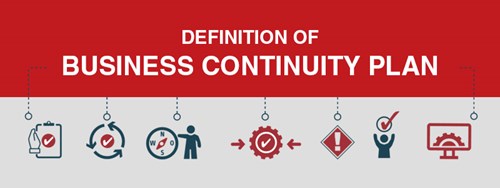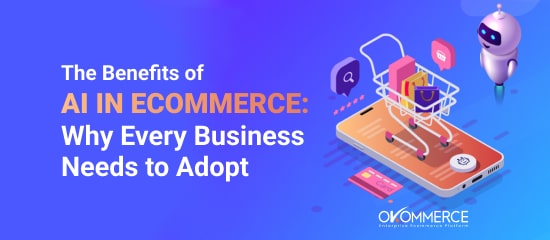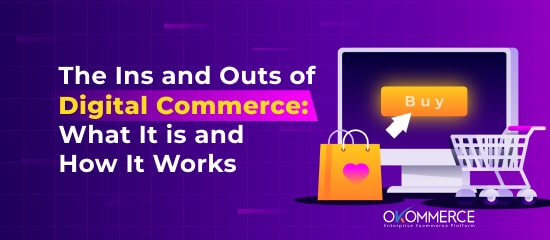How to Create Ecommerce Business Continuity Plans: 5 Proven Ways

Since the ecommerce industry is rapidly growing and confronting new challenges each day, it’s almost impossible to survive in this arena without a proper continuity plan. You never know what the future holds for your business, an ecommerce business continuity plan can help you move forward fighting against contingencies. Without a feasible plan in place, businesses regardless of their sizes and investments may find it difficult to continue their operations smoothly. So, as a business owner, you need to assess potential risks and create contingency plans for unexpected events. Read on to know how you can come up with ecommerce business continuity planning to make your business ready for disruptions.
Definition of Business Continuity Plan

Business continuity plans help companies run their businesses ceaselessly during crisis situations such as disruptions caused by fires, floods, employee strikes, or other cyber attacks. A business continuity plan comprises necessary proceedings and instructions required to operate the business in the face of uncertain natural or man-made disasters. Business processes, assets, business partners, human resources, and other important aspects of the business are addressed precisely in this business continuity plan. Such comprehensive plans keep business operations up and running.
What May Affect Your Business Continuity?

Business owners realized the need for continuity planning very well during this ongoing COVID-19 pandemic situation. A good number of small and medium businesses had to either shut down their business or sack employees to survive the sudden disruptions. You need to assess your business risks prior to any such events that may become threats to your business continuity. It’s wise to have contingency plans to be ready to face every possible circumstance. Some common threats to business continuity are as follows.
Natural Disasters
No one can control weather-related natural disasters such as hurricanes, cyclones, tornados, etc. earthquakes, volcanic eruptions, tsunamis, and wildfires are more dangerous natural calamities that may affect your business drastically. Some of these disasters are predictable while some others may occur within a blink of an eye. You can take precautions to mitigate the damages but you can't avoid natural disasters fully.
Pandemics
We all witnessed what a global pandemic can do during the Coronavirus outbreak. Many manufacturers stopped producing their products as there was strict lockdown in effect and everyone had to confine themselves within their homes. Grocery delivery, medicine delivery, online shopping, etc. a few businesses boomed during this pandemic but every other business faced great losses and difficulties. Insignificant production results in a shortage of supply and causes serious problems for respective businesses.
Utility Disruptions
Electricity power loss, broadband, and other communication disruptions, water supply outage, gas supply shortage, etc utility-related issues can affect a business to a great extent. Your day-to-day operations might get severely affected by such utility disruptions.
Cyber Attacks
Ecommerce business completely relies on the internet and other associated services. Your cyberspace may face several cybersecurity risks like ransomware attacks, SQL injections, data theft, DDoS attacks, and more. Sadly, you may lose all your business data if you don't have a backup of your data beforehand. Cyber attacks can shut down your online business temporarily or may limit your business functionality till the issues are resolved.
How to Create Effective Ecommerce Business Continuity Plans

A business continuity plan must have four major features- comprehensive, feasible, effective, and adaptable. It should address every potential disruption that may cause problems for your business. The plan should be realistic and feasible. What's the point of having an amazing plan in place if it’s not efficient enough to keep your business up and running? And most importantly, you never know exactly what kind of situation you will face. So, keep enough room in your plan so that in the event of emergencies or unexpected circumstances, your plan can adapt to the scenario without conflicting your interest.
However, since business is a complicated thing, continuity planning may confront complex issues. You must handle them with sincere care and try your best to craft an efficient business plan for the betterment of your business. You can follow the below steps for the best outcomes.
1. Determine Your Goals and Objectives
The sole purpose of business continuity planning is to keep each business-related thing running smoothly from management activities to technological services. But the goals and objectives vary from business to business. That’s why you need to determine your own goals considering the type and background of your business.
2. Build a Dedicated Contingency Team
In emergency situations, people lose their regular capability of decision-making. That's why you need to build a dedicated team only for contingencies. Train and motivate them ahead of time so that they don't get caught off guard when emergencies come. This will help you reduce the chaos because everyone will be pre-informed about what to do and what to consciously avoid. Assign a competitive leader for this team so that they can respond in the best manner.
3. Assess the Risk Factors
Identify the major threats that have the potential to affect your business continuity. Conduct thorough research and analyze the findings. Discuss the risk factors with team members and find out the solutions to reduce, eliminate or modify essential elements, functions, and services. For ecommerce, you must consider the following risk factors.
- Inventory management and supply chain
- Order fulfillment and shipping process
- Ecommerce platform functionality
- Customer service management
These are the few things that work as the foundation for an ecommerce business. Any shortage, outage, or disruption of these components will harm your business greatly. Assess the risks surrounding these factors and try to come up with contingency plans to deal with them.
4. Maintain Proper Coordination
Your business doesn't depend solely on you. It has several parts that work together to keep it running smoothly. You need to depend on employees, warehouse managers, support teams, vendors, and other personnel-related to your business. Without proper coordination among them, you can’t succeed in continuing your business. Keep all your team members connected with each other so there remains no confusion. Video calling apps and meeting apps can play a pivotal role in maintaining this coordination.
5. Review Your Plans and Revise It (If Needed)
Once you’re done with the business continuity plan, share it with your partners and other stakeholders. Seek suggestions from them and arrange to perform trial runs. Create a hypothesis incorporating the ideas into a realistic situation. Identify the missing parts of your plan and complete a SWOT analysis. Review the plan thoroughly, find out the holes, and update the continuity plan if necessary. Keep your plan flexible so that you can make adjustments to unexpected situations. Never hesitate to revise a plan if the situation demands.
Okommerce, an enterprise ecommerce platform that is designed to serve the needs of large-scale enterprises. If you are looking for a reliable, secure, and budget-friendly ecommerce platform, get Okommerce today.




